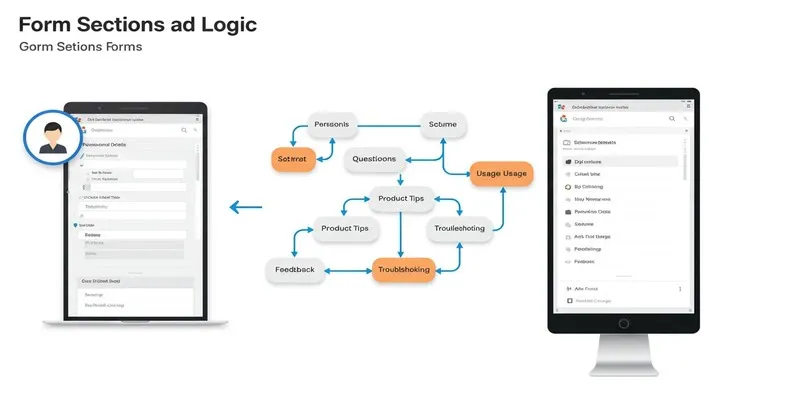The Tool Debate: Browser-Based or Installed
Software use has evolved rapidly. A decade ago, getting started meant installing programs, dealing with updates, and managing storage. Today, browser-based tools offer instant access without downloads, turning any device into a ready workspace. From document editing to design, cloud tools have changed how we work and collaborate. Still, installed software holds strong in areas needing speed, control, or offline access.
The shift isn’t just about convenience—it's reshaping expectations. As both options grow, knowing when to use them matters more than ever. This balance between flexibility and performance defines the modern digital workflow—and it's changing how we approach every task.
Speed, Portability, and Updates
Browser-based tools have become synonymous with accessibility. With nothing to install, all you need is a login and an internet connection. Whether you're on a personal laptop, someone else's tablet, or a shared computer at a co-working space, your environment comes with you. Forget about having to have the same platform—macOS, Windows, or Linux, your tool simply works.
Speed, however, can be a double-edged sword. While the setup is instant, performance is tied to your internet connection and browser load. Heavy users often notice lag when working with complex browser-based tools, especially those dealing with large files or multitasking across multiple tabs. That’s where installed software still wins out. It’s optimized for your hardware, and without the constraints of a web browser, it tends to be faster and more responsive under strain.
Another significant distinction is in the management of updates. Installed software tends to necessitate manual downloads or system restarts, and old versions can linger longer than they should. Browser-based tools avoid all that trouble. Updates occur in the background, keeping users up to date without having to do anything. This is particularly precious in shared environments, where everyone must be using the same version of a tool to prevent compatibility problems.
Security, Privacy, and Control
There’s a growing concern about privacy and security in the age of cloud computing. When using browser-based tools, your data often lives on external servers. This isn’t inherently unsafe—cloud providers invest heavily in encryption and intrusion prevention—but it means trusting third parties with your files. If you're dealing with sensitive documents or proprietary information, this can be a sticking point.

Installed software gives users more control. Files are typically stored locally, and you don't depend on a third-party server to keep things secure. This local-first approach gives a stronger sense of ownership and is often preferred by industries bound by strict compliance requirements.
Still, that doesn’t mean installed software is automatically safer. Poor patching habits, outdated security protocols, and malware can still creep in. On the flip side, cloud platforms can deploy patches quickly and often have dedicated teams working around the clock to detect and respond to threats. In essence, both formats come with risks—it’s about understanding where those risks sit and how much control you really need.
Offline Access vs. Real-Time Collaboration
Working offline has long been the stronghold of installed software. It’s reliable, fast, and independent of internet status. You can edit a video, write a report, or design a 3D model whether you're on a plane, in a rural area, or just dealing with a spotty connection. That kind of autonomy is critical in certain workflows and industries.
Browser-based tools, by contrast, are often tethered to connectivity. While some have offline modes, they tend to be limited in function and sometimes finicky to set up. But where they shine is in collaboration. Real-time editing, comments, shared files, and version control are built-in. Teams can work together from different locations and time zones with little friction. This collaborative power has reshaped everything from document editing to graphic design, making browser-based tools an ideal choice for remote and hybrid teams.
There's also a convenience factor to consider. Installed software often comes with licensing headaches, device limits, and rigid pricing models. Browser-based tools usually offer subscription-based access that scales easily. Do we need to add five team members? It's a few clicks away. That flexibility has made cloud-first platforms especially popular among startups and freelancers who need tools that grow with them, not against them.
Longevity, Compatibility, and User Preference
Installed software has a legacy advantage. Professionals who rely on high-performance programs—such as engineers, developers, or video editors—often need access to features and system integrations that browser-based tools can’t yet match. These tools are built to push the hardware, taking full advantage of GPU acceleration, local storage, and custom configurations.

While improving quickly, browser-based tools still struggle with some of these advanced needs. They're built for the masses and, in doing so, often prioritize simplicity over power. That's not always a bad thing. For general productivity tasks, they're more than enough. But when a tool is your lifeline and performance is non-negotiable, local installs still lead.
There's also a question of user familiarity. People grow comfortable with what they know, and many decades of working with installed software have created a deep workflow muscle memory. Shifting to browser-based tools might feel like giving up a bit of that control, even if the tool itself offers more modern features.
Compatibility is another point where the lines get blurry. Installed software can sometimes struggle with cross-platform syncing or sharing, whereas browser-based tools are designed with universal access in mind. But it all comes down to what you need to do. A writer might be fine with Google Docs, but a music producer probably won’t ditch their digital audio workstation for a cloud version anytime soon.
Conclusion
Browser-based tools and installed software each offer clear strengths. While browser tools bring unmatched flexibility and real-time collaboration, installed software delivers better performance and offline reliability. The choice depends on your workflow, priorities, and how much control you need over your tools. Many users find value in using both—one for convenience and the other for power. In a world where work happens anywhere, knowing when to rely on the cloud and when to stay local can make all the difference.
Related Articles

Is Cutout.Pro Enhancer Worth It? Best Alternative to Consider

Upgrade Your Streaming: 5 Chrome Extensions to Enhance Video Quality

10 Creative Ways to Turn Your Videos into Stunning GIFs

Best Tools to Convert Video Formats: Top 5 Transcoders You Need

Best Tools: 4 Video Players for Frame-by-Frame Analysis

Mute Any Video on Desktop in Seconds: The Ultimate Guide

KineMaster Without Limits: Removing the Logo the Right Way

How to Convert WMV to MP4 Without the Internet: 7 Offline Tools

Improve Your Videos with These Top 4 Free AI Video Enhancers

AI Highlight Video Makers: Top 3 Tools to Capture Best Moments

Top 2024 YouTube to MP3 Converter Sites That Are Safe, Free, and Legal

 bobobk
bobobk